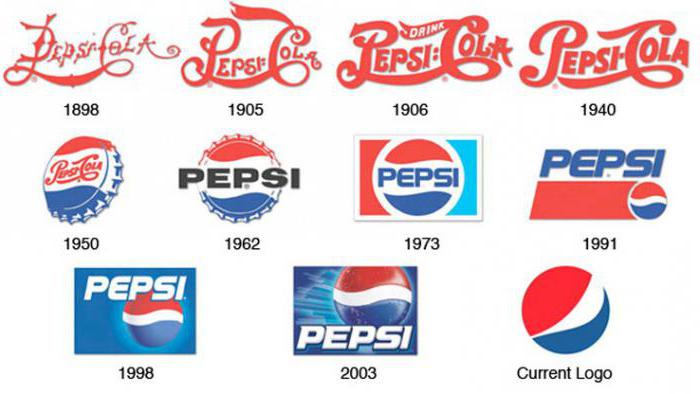Rebranding is not a change in the logo and not a refreshment of the packaging design or company identity. Similar marketing tools lead to a new perception by customers of the brand. Real rebranding helps to increase revenues, become more reliable and attractive for old and new customers and enter a new horizon for the development of the region. The main goal of rebranding is to create a new customer experience about the company.

The essence of rebranding
We can say that rebranding is a well-known marketing technology that can make a leader inaccessible, and a pursuer number one. But there is one serious snag. Rebranding, which belongs to the category of “marketing tools”, is the most difficult to manage and control, it requires a boundary balanced decision-making and coordinated work of the entire team.
The term "company rebranding" is difficult to surprise anyone in the modern world. The average consumer does not see anything ordinary in changing the logo or the overall design of the company. Moreover, he considers this an unreasonable expense of funds. Often, rebranding is perceived only from the outside: the choice of font in the update, color scheme, and more.
In practice, the situation is much more interesting and deeper. Three terms are used in marketing with the prefix re-: repositioning, restyling, and rebranding.

Restyling
Restyling is an ordinary tool. Specialists often use this term with the epithet "easy". Sometimes brands make general restyling or specifically restyling of a logo, corporate identity, package design. For this occasion, extensive advertising campaigns are often issued, but these modifications themselves are visible only to their creators. Brands do not have specific prerequisites for restyling, but they are stubbornly implementing them.
Such marketing tools are cosmetic. Such changes do not bring any influence on the brand’s relationship with customers.

Repositioning
The second type of restyling is deeper, it has strategic reasons, and here the differences are clear. The main task of restyling in this case is to increase brand recognition subject to changes in the environment of its habitat.
For example, the target audience of the company is young people under thirty years old, and intricate graphic designs are in fashion. In ten to twenty years, the previous target audience of the brand has matured, and it is necessary to speak its language with a new buyer.
The second type of restyling is used by companies with life experience. But not always after such a change in the logo the branding of the brand changes completely, although changes in positioning may occur. Companies are trying to increase their fame and at the same time maintain their visual image.
Directly rebranding
And the third type of brand behavior has a completely different nature. And specifically with regard to brand companies using this approach, it is customary to apply the term “rebranding”, that is, brand reformation, its improvement and correction.
We are talking about companies that, according to certain prerequisites, are making special changes (repositioning), significant changes in visual symbolism (color, logo, design and packaging) and new messages, new communication strategies (slogan, creative settings). In addition, updated principles for working with clients are being developed.

Rebranding Reasons
Often rebranding is carried out in three cases:
- When a brand is acquired by a new owner who has his own attitudes, goals and values. He can become the heir to the image that the acquired company already had.In another case, the owner can change everything related to the acquired brand.
- When the owner remains, but the brand name is no longer liked or for some reason is unacceptable to the target audience.
- The third category of use of rebranding is when a brand, perceiving changes in the consumer's worldview and competitive environment, changes the target audience, makes corrections in positioning, and then, as a result, updates the logo, appearance and messages, communication style.
Companies belonging to the third group of using rebranding are often companies that conduct their business, looking to the future and striving to ensure that past successes do not become chains. They use rebranding as a holistic marketing tool for brand renewal.
Often rebranding helps to make a qualitatively new leap, bypassing competitors. But it could be the other way around. If understanding is not reached, brands that have decided to rebrand lose their chance of growth and may lose their stable success even among loyal customers.
The need for rebranding
You should resort to rebranding when:
- from the very beginning, the brand was misrepresented;
- changes in market conditions have come, and brand adaptation to them is impossible;
- brand recognition, its popularity is too low;
- competitors gain the upper hand over the company;
- the brand sets new, higher goals.

Rebranding Tasks
The tasks that the rebranding should carry out are:
- increasing the uniqueness of the brand, its differentiation;
- strengthening the loyalty of its consumers;
- attracting new customers, expanding the target audience of the company.
Rebranding experts recommend leaving those elements that are positive aspects of the company in the eyes of the consumer, defending it in front of competitors. It is also necessary to remove those properties that create a negative effect for the brand.
Rebranding process
Rebranding stages:
- Brand Audit. This is a detailed observation of his current state, consumer attitudes towards him, recognition and loyalty of the target audience, recognition of problem and strengths, determination of the depth of rebranding, research of the company's financial sources.
- Development of tactics and strategies for the rebranding process. This decision is about changing certain elements of the company’s style.
- Reconstruction of the main components of company identity. At this stage, a new positioning is created, fresh components of visual and verbal recognition, innovative brand communication.
- Acquaintance of the audience with the result of rebranding and its meaning.
Rebranding a brand is a rather risky undertaking. This is a sign that management is embracing a change in business strategy. If the existing brand has gained stable audience recognition, then it is entirely possible to lose it after rebranding. However, change is necessary for a rapidly developing world.

Common mistakes
Typical errors include:
- rebranding the logo in such a way that it stands out from the general style of the brand or does not say anything about it;
- rejection of existing brand positions in the market;
- extracting the essence of the brand from the name, a strong generalization;
- insufficient preparation for change, ignoring testing of innovations on the audience;
- Partiality of the process, its application only to selective aspects of the activity;
- false information.
Rebranding: examples
An example of rebranding is one of the well-known companies, which, due to the improvement of its own brand, increased sales and popularity. This is the well-known company Pepsi-Cola, which conducted its rebranding policy in 1998. About once every decade, Coca-Cola and Pepsi make relatively significant updates.

In the field of companies providing mobile services, Svyaznoy Group carried out a successful rebranding in 2008. The brand logo acquired a color bar and the colors of the company expanded.The logo font has also been changed.
In 2005-2006, Beeline also experienced one of the most successful rebranding among telecommunication brands.
Everyone knows the updated image of Aeroflot, as well as Russian Railways.
The International Air Transport Association in 2007 re-branded. Changing the name to Unifest Travel, introducing electronic tickets, joining the BSP system - all this brought the company to a new level.
Rebranding is a laborious and large complex process, which gives a huge chance for a company to change direction and its history.








